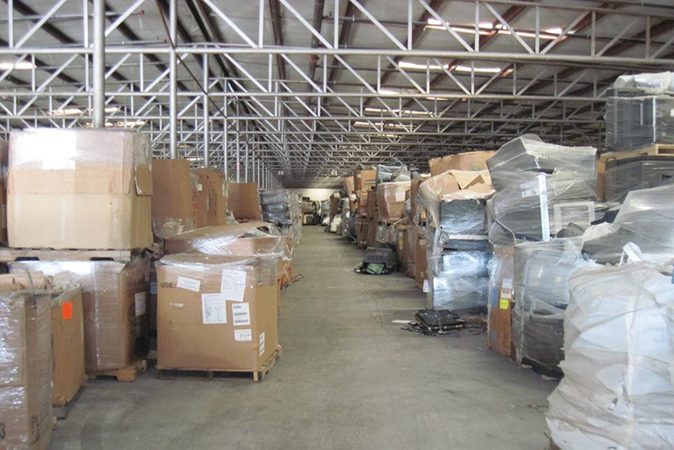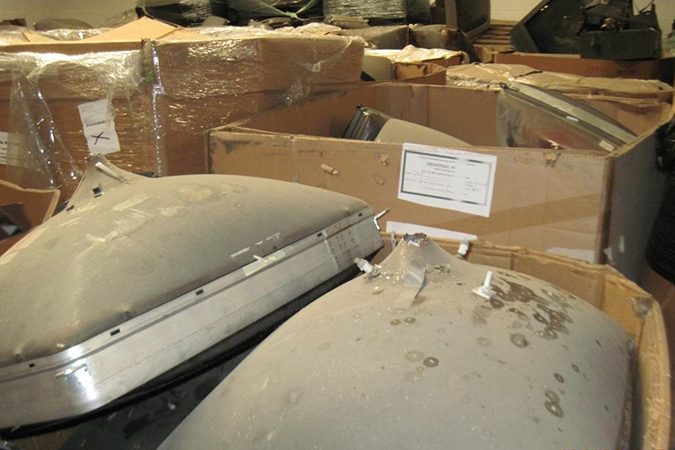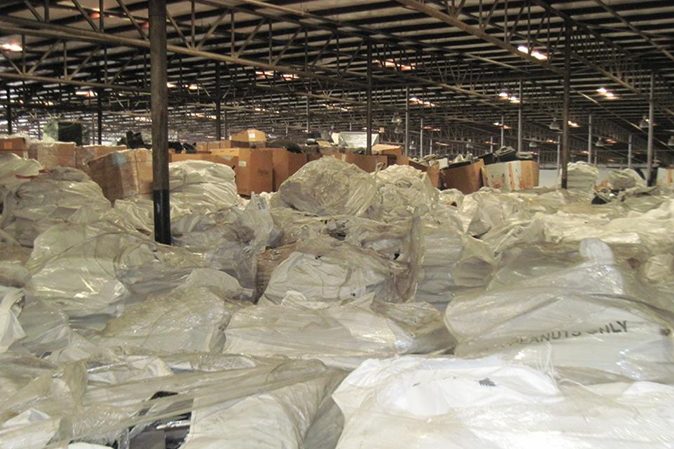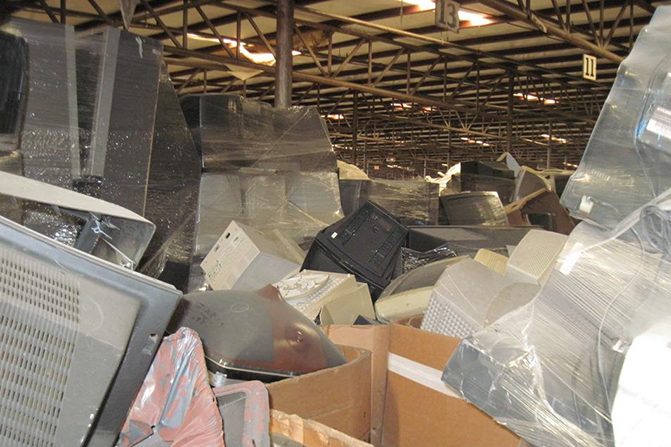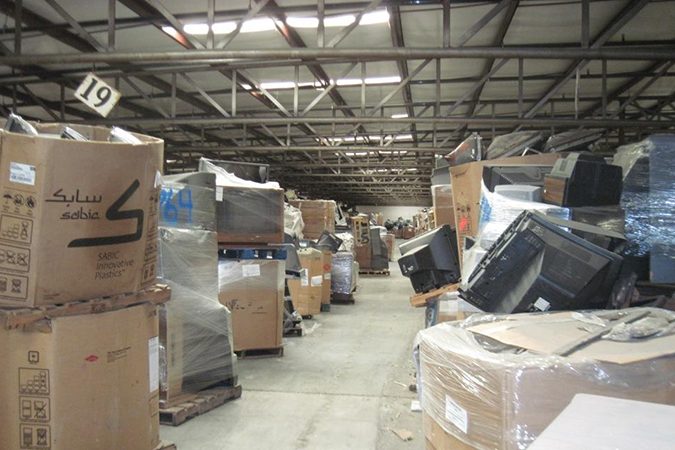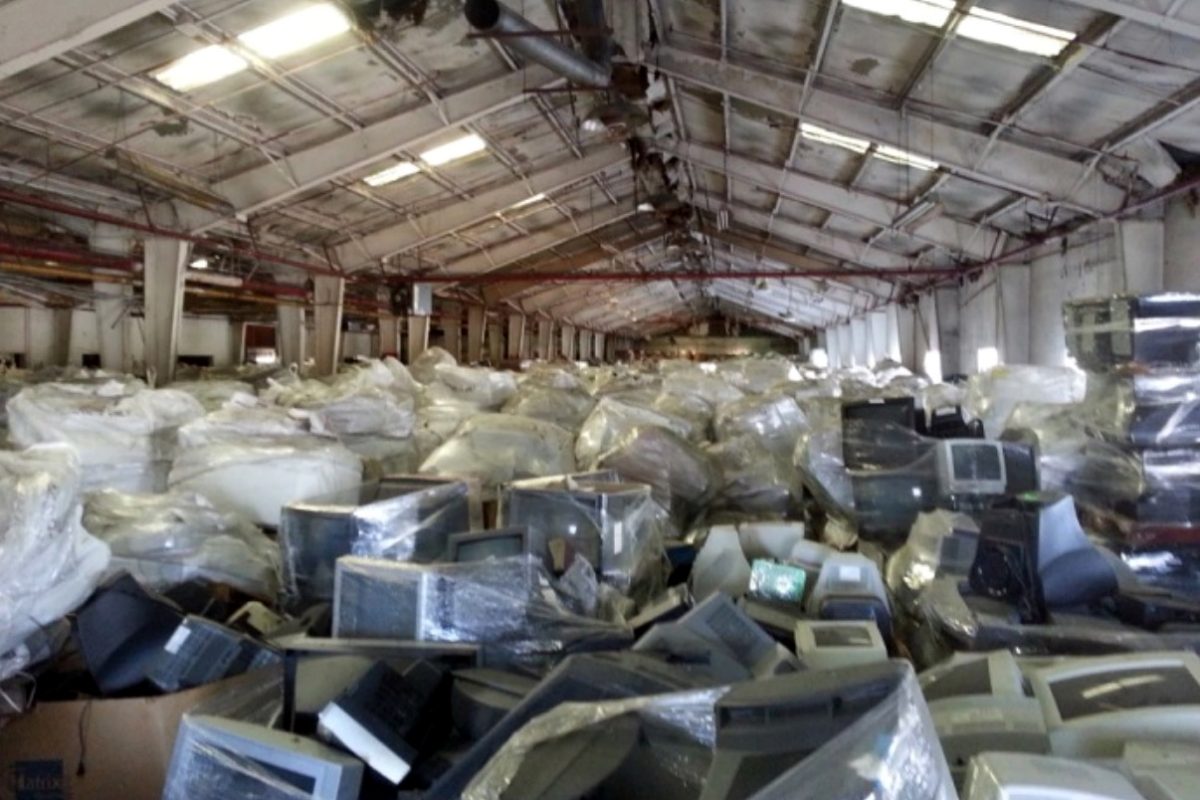
In 2015, GES dug a hole behind its Georgetown, Ky. facility and filled it with e-scrap, including leaded glass, and other materials.
When Global Environmental Services failed, the processor left CRT messes at multiple sites in two states. Years later, with the former owner in prison, government officials are nearing the last of the warehouse cleanups.
E-Scrap News has learned that public money will be used to dispose of about 26 million pounds of CRT glass at two Kentucky sites, and the costs are likely to run into the millions of dollars. Officials expect to put the remaining cleanup work out for bid in March.
“We’re wanting to see completion to this project in this calendar year,” Jon Maybriar, director of the Kentucky Division of Waste Management, told E-Scrap News this week.
And while a federal court has ordered the former owner, Kenny Gravitt, to pay $5.4 million in restitution, it’s unlikely the landlords and commonwealth of Kentucky will ever be substantially reimbursed by Gravitt.
Before it filed for bankruptcy November 2015, Global Environmental Services (GES) operated sites in the Kentucky cities of Georgetown, Cynthiana and Winchester. The company also has a processing facility in Hutto, Texas, and a site in Cincinnati. Founded by Gravitt in 2008, the e-scrap processor often touted its CRT glass technology, which the company claimed created a sand-like product with lead content stabilized to a low level.
Cleaning up the messes
The processor’s CRT management problems came into the public eye in October 2015, after neighbors sent photos to state regulators and TV news of GES burying material in a large hole behind the Georgetown facility, Maybriar said. (In a recent court filing, the U.S. Attorney’s Office claimed to have evidence that Gravitt had also “hatched a plan, which ultimately failed to come to fruition, to dig a hole on a farm in Washington County to dump CRTs.”)
After investigating all three sites, state officials issued a notice of violation and ordered GES to clean up the mess. Shortly after, the company filed for bankruptcy.
State- and landowner-funded cleanups occurred in parallel at the Georgetown facility. While the warehouse owners paid to have material excavated and remediated, the Division of Waste Management declared an environmental emergency and hired a contractor to clean up leaded sand that had been released on the ground, Maybriar said. According to a 2016 report to state legislators, in January 2016, a treatment additive that seals in lead was used on 433 tons of ground glass, which was then sent to a nearby sanitary landfill.
Today, the Georgetown site has been cleaned up and is being re-rented, Maybriar said. But roughly 26 million pounds of CRT materials remain in storage inside warehouses in Cynthiana and Winchester. Specifically, about 8 million pounds of TVs are on pallets in Winchester, and about 18 million pounds of ground glass – along with displays in various stages of processing – are stored inside the Cynthiana warehouse.
The state’s contractor, Chase Environmental Group, previously estimated cleanup costs at those sites would range from $3.3 million to $7.1 million, depending on the methods used to treat, recycle and/or dispose of the material. According to documents filed in Gravitt’s criminal case, the state has appropriated $3.5 million to clean and abate the properties.
Harrison County, Ky., where Cynthiana is located, will put the remaining cleanup work out to bid, and the state will fund it through its Illegal Open Dump Grant program. Money comes from a $1.75-per-ton remediation tip fee charged at Kentucky landfills. The Division of Waste Management and Harrison County are currently working on bid specifications. They expect to put the work out to bid in March, Maybriar said.
“We’re going to be looking at whatever the lowest bid is, whatever the most cost-efficient price to keep down the overall remediation dollars for this site, since we are incurring the cost associated with that cleanup,” Maybriar said. “But we also want to make sure whatever the technology is they’re using is a true, proven technology.”
The state contractor estimated treating glass on-site for disposal at a non-hazardous waste landfill could take four to five months. Hauling it straight to a hazardous waste landfill could take as little as a month.
GES also has a facility in Hutto, Texas, near Austin. In February 2017, landowner HLT Properties filed a lawsuit against GES and several insurance companies. HLT Properties claimed it was forced to spend $500,000 cleaning up the site, after state regulators determined the site risked polluting public waters and lands. Two years later, parties continue to battle in court over who should pay for the cleanup.
(Article continues below slideshow.)
Images show GES’ Winchester, Ky. warehouse
Millions in restitution ordered
In 2017, a grand jury indictment first charged Gravitt with federal crimes related to CRT management. The case was in U.S. District Court for the Eastern District of Kentucky. In May 2018, he pleaded guilty to two charges, and in November 2018, the court sentenced him to three years in prison. Gravitt, who has health problems, is currently lodged at a prison in Lexington, Ky. that specializes in providing medical care to inmates. His release date is set for Aug. 17, 2021.
In January, the court ordered Gravitt to pay nearly $5.5 million in restitution to owners of the Kentucky properties and the Kentucky Division of Waste Management.
Of that amount, Gravitt is supposed to pay $551,000 to Georgetown Warehouse (owned by the Estate of Lois Oliver), $560,000 to Winchester Warehouse Co. LLC, $763,000 to Stratton Properties and up to $3.5 million to the Division of Waste Management.
A joint motion from the U.S. Attorney’s Office and Gravitt’s attorney noted the state of Kentucky already spent $167,000 in emergency remediation and appropriated an additional $3.5 million to clean and abate the property. The court order directed that the landowners receive restitution before the state.
“That’s kind of a policy that we have sometimes here in the commonwealth, that we’d try to let the private sector try to recoup their costs and if there’s any funds left over then we’ll try to recoup our costs also,” Maybriar explained.
If the state’s actual cleanup costs are less than $3.5 million, officials have been instructed to notify the court so the restitution order can be amended to reflect actual expenses.

Pile of glass sand at GES’ Cynthiana, Ky. facility in 2015.
Prosecutors don’t believe Gravitt has enough money to pay the restitution. In a recently unsealed court document, they wrote that he has $33,000 in a bank account and $48,000 in an individual retirement account, and he has no vehicles or property in his name. They wrote that, from March 2017 until October 2018, he sold, gifted or disposed of multiple assets, including nearly $22,000 from his IRA, real property, a Mercedes Benz SUV and a $10,000 watch.
“Upon review of defendant’s financial disclosure, the United States does not believe defendant has the funds to substantially satisfy any expected restitution order in full,” according to the U.S. Attorney’s Office.
GES used to hold a contract with the state of Kentucky to process e-scrap. Last fall, the state put the e-scrap recycling/ITAD contract back out to bid, and the selected processor was Salisbury, N.C.-based Powerhouse Recycling. Under the contract, Powerhouse Recycling is paying the state for a variety of materials and is charging 25 cents or 30 cents per pound for CRTs, depending on the type of CRT device. The contract runs through Oct. 29, 2020.
Because of the GES case, the state contract now requires the processor to have a bond in place and maintained, and it limits the amount of e-scrap that can be stored at any given time, Maybriar said.
“Even though we had some requirements in our old contract, it’s hard to prevent criminal activity when somebody has the intent of breaking the law,” Maybriar said, “and that’s what happened with GES.”
Photos courtesy of Kentucky Division of Waste Management.
More stories about CRTs
- Analysis: CA climate rules set off ripple effect for thousands
- URT closes New Hampshire site, shifts work west
- Closed Loop companies hit with $3 million in Ohio penalties


